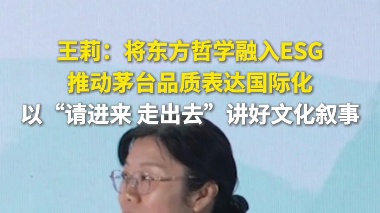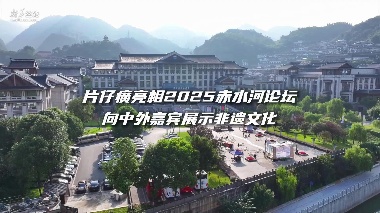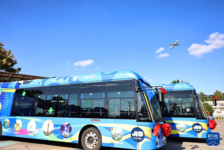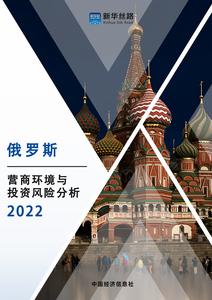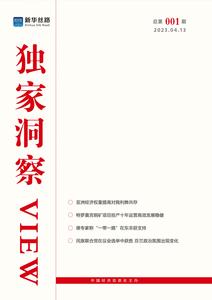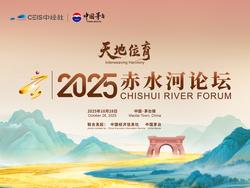
In 2012, the Ministry of Environmental Protection approved our city’s program to build a national-level model city for environmental protection. After five years of continuous efforts, 108 out of 130 key modeling projects in 13 categories have been completed; while one project was canceled while two were halted. This process involved a cumulative investment of RMB 11.1 billion. The program is expected to be fully completed in 2017.
There has been an uninterrupted progress in the examination and approval of significant projects in terms of environmental impact assessment.
First of all, during the “12th Five-Year Plan” period (2011-2015), 2,575 municipal construction projects, involving an investment of RMB 449.05 billion, were examined and approved. Under the examination and approval of the Ministry of Environmental Protection, 25 construction projects, with an investment of RMB 333.671 billion, were coordinated. Meanwhile, involving an investment of RMB 408.154 billion, another 247 construction projects of the Department of Environmental Protection were coordinated. In 2016, the municipal construction projects examined and approved a total of 135 projects. Moreover, the Ministry of Environmental Protection and Department of Environmental Protection coordinated the examination and approval of eight and three projects, respectively, with an aggregate investment outlay of RMB 190.5 billion.
Secondly, in April 2015, the environmental impact assessment report on our city's coal-fired power base plan passed the examination and approval of the Ministry of Environmental Protection. It laid foundation for the UHV (ultra-high voltage) line from western Inner Mongolia to southern Tianjin and from Shanghai to Shandong, and also catered for large quantities thermal power projects with 23.48-million-kilowatt total installed capacity.
Thirdly, the Ministry of Environmental Protection approved major municipal coal chemical projects, such as the coal-to-gas by Beijing Enterprises Group, coal-to-oil by Yitai Group and coal-to-olefin by Total. Active coordination has been carried out in the examination and approval of coal to natural gas projects of Hebei Construction & Investment Group, China National Offshore Oil Corporation, Inner Mongolia Huaxing New Energy Company and Xinmeng Energy Investment Holdings, and the second and third lines of the coal-to-oil project of Shenhua Group.
Fourthly, on May 29, 2015, our city and the Appraisal Center for Environment & Engineering of the Ministry of Environmental Protection signed the “Strategic Cooperation Agreement on Jointly Promoting the National Clean Energy Output Base and Modern Coal Chemical Production Demonstration Base” and then worked together to complete five development projects for boosting the city’s green transformation.
Fifthly, we have ensured order in 805 “built before approved” projects and 62 “dragged without inspection” projects. In particular, the “nonconformed approval” of Beijing Zhong Tian He Chuang Environmental Technology Co. Ltd and the “dragged without inspection” problem of China Shenhua Coal to Liquid and Chemical Co. Ltd were solved with appropriate coordination.
Sixthly, 15 out of 17 industrial parks obtained the review opinion on environmental impact assessment of planning. The environmental impact assessment reports of the remaining two industrial parks (airport and Jungar Economic Development Zone) are being compiled.
In the meanwhile, the city has been carrying out emission reduction tasks.
First of all, during the “12th Five-Year Plan” period, we reduced 112,000 tons of sulfur dioxide, 78,000 tons of nitrogen oxides, 12,000 tons of chemical oxygen demand, and 1,500 tons of ammoniacal nitrogen, thus achieving both the directive of the “12th Five-Year Plan” period and annual emission reduction target.
Secondly, key emission reduction responsibility projects at the level of countries (37 in total) and autonomous regions (40 in total) listed in the “12th Five-Year Plan” emission reduction responsibility were completed one year ahead of schedule. At the municipal level, 213 self-pressurized emission reduction responsibility projects were finished.
Thirdly, the city was identified as the pilot city for emissions trading by the autonomous region. In January 2015, the city's emissions right trading center was set up, with the cumulative transaction of 8,300 tons of sulfur dioxide indicators, and 14,500 tons of nitrogen oxide indexes, amounting to RMB 29.91 million.
Fourthly, based on breaking the bottleneck in the aggregate of development during economic restructuring, we ensured the completion of the emission reduction tasks issued by the autonomous region while maximizing the reduction of emissions to provide aggregate support for the city's economic transformation. During the “12th Five-Year Plan” period, the city ranked first with respect to emission reduction in the autonomous region. In the emission reduction assessment of the autonomous region, it won the second place in 2011 and the first place in 2013, 2014 and 2015.
Moreover, the atmospheric quality has continued to improve.
First of all, the “Air Pollution Prevention and Control Program for Ordos in 2013-2017” and the Annual Pollution Prevention Work Program were formulated. We emphasized the implementation of 26 projects in 10 categories involving closing down outdated production facilities, shutting down coal-fired small boilers, strengthening the desulfurization, denitrification and dust removal transformation of industrial projects, intensifying the comprehensive treatment of mining environment, and strengthening the prevention and control of motor vehicles. At present, the work has been up to the mark for comprehensive inspection according to the first stage assessment target of national ten measures of the “Plan of Action for the Prevention of Air Pollution”.
Secondly, the “Implementation Scheme of Comprehensive Environmental Improvement in Qipanjing and Mengxi” was compiled. In the form of project task list, the plan made arrangements for 333 specific remediation tasks of 24 kinds in the next 5 years, clarified the content, work requirements, deadlines and specific responsibilities of each task and implemented general ledger management. In 2016, RMB 2 billion were invested and 274 projects were completed. In 2017, RMB 2.8 billion were invested and 71 remediation tasks were finished.
Thirdly, environmental quality assurance tasks were successfully completed in major holidays including APEC in Beijing and Military Parade on September 3. We have done our best to ensure air quality in major activities such as the 19th Session of National Congress of the Communist Party of China, the 70th anniversary of the autonomous region and the 13th Conference of Parties to the United Nations Convention to Combat Desertification.
Fourthly, in 2016, the air quality was excellent for 317 days, and seriously polluted only for 3 days; the fine rate was 87.6%. The PM2.5 concentration was lowered to 0.024 mg/m³, which was an 11.1% decrease compared to the same period of 2015. The six monitoring indexes have reached the national Grade II.
Fifthly, in terms of air pollution prevention and control special assessment, our city won the first place in 2016 in the autonomous region.
Furthermore, we have carried out water pollution prevention and control in an orderly fashion.
In the protection of water sources, the division of protected areas was completed in 51 centralized drinking water sources (11 cities, 36 towns, and 4 villages), and comprehensive rectification work of protected areas was carried out in 42 centralized water sources (9 cities and 33 towns).
Our city has been invited to make a representative speech at the National Conference on the protection of water sources for several times. In accordance with the “one file for one source” management mechanism, we have constantly increased supervision of the 51 water sources. The water monitoring data concerning the centralized drinking water source of cities and towns show that the annual water quality compliance rate is 100%. In terms of the river basin section, the implementation plan on water pollution control action in 2016-2020, and annual implementation plan were formulated. At present, four (Sanshenggong, Toudaoguai, Dengkou, and Wanjiazhai) out of the seven assessed sections in the city are standard while three (Ulam Mulun River, Dusitu River, Beiniuniu River) are substandard. Therefore, the substandard water quality treatment program was formulated for implementation.
The year 2016 witnessed significant improvement in water quality. For the year 2017, 27 section treatment projects have been arranged, which are being actively promoted. In terms of sewage treatment, 12 sanitary sewage treatment plants (nine perform first level A standard, and three perform first level B standard) were completed and put into operation in nine counties of the city while another two are under construction. Eight sewage treatment plants of various kinds in the city’s eight mature industrial parks (five achieved first-level A-standard and three achieved first-level B-standard) were completed and put into operation, while seven are under construction.
In order to ensure the stable and standard operation, substandard sewage treatment plants are being upgraded and reconstructed. In treating water with high salinity, Qipanjing Xiqing Environmental Protection Company has finalized salt and the chemical fertilizer program under China Coal in Tuke, Uxin and Hangjin Yiding Coal to Chemical Company. The program initially solved the national problem of treating such kind of water, controlled the production cost and enhanced the efficiency of coal to chemical enterprises.
At the same time, work on soil pollution prevention and control has started.
First of all, we have set up the Department of Soil Environment Management, thoroughly researched the status of soil and formulated the “Plan for Soil Pollution Prevention and Control”.
Secondly, in 2016, we handled 26 preliminary trials of inter-province transfer of hazardous wastes, dealing with 63,000 tons of hazardous waste, and 27 examination and approval businesses of the inter-city transfer of hazardous waste, treating 6,297 tons.
Thirdly, special action on nuclear and radiation safety supervision were carried out regularly, thus improving the nuclear safety management and protection of enterprises.
In addition, the environmental supervision capabilities have also been enhanced.
First of all, during the “12th Five-Year Plan” period, we dispatched a total of 83,000 person-times of environmental monitoring personnel, adopted open and secret investigation, raids and other means toward 22,000 enterprise-times, among which 2,100 were ordered to correct environmental violations within a prescribed time limit. Especially since the implementation of the new law on environmental protection in 2015, 44 environmental violations have been incurred penalties till date, and 64 enterprises have been closed down and detained. Meanwhile, 63 enterprises have been limited and stopped production, 26 cases of environmental violations have been transferred to the public security organs (34 people were under administrative detention), and only a single case of environmental crime has taken place, thus indicating that environmental violations in the city were effectively curbed.
Secondly, the administration of the city successfully solved the “dead sheep” and “dead birds” public opinion events hyped by the media, set up a working group to protect the environment in Uxin, guided and promoted a series of key environmental infrastructure construction in Uxin, with RMB 2.8 billion investment in total, thus effectively preventing the continuous occurrence of major public events.
Thirdly, according to the requirements of the “Circular of the General Office of the State Council on Strengthening Environmental Supervision and Law Enforcement” and the “Circular of the Environmental Protection Department of Inner Mongolia Autonomous Region on the Implementation of Grid Management of Environmental Protection in the Whole Region”, we built a grid supervision system for environmental protection from horizontal to vertical and vertical to the end, set up 1,102 regulatory grids at all levels in accordance with administrative divisions, and arranged a total of 2,318 officers at all levels for supervision. The grid division schemes at all levels have been filed with the people's governments at higher levels and have been released to the public via websites of governments and environmental protection departments, initially realizing the “all -weather, all-direction, whole-process, full-time, and full-coverage” environmental regulation.
Fourthly, in 2016, environmental credit evaluation of enterprises was implemented in 20 key enterprises, including four as “integrity”, 12 as “friendliness” and 4 as “warning”. The evaluation results were announced to the public through the official website of the bureau.
Fifthly, dynamic databases of random inspection on staff and enterprises were established, and the “double random” (on inspected enterprises and personnel) supervision mode was rolled out.
Sixthly, the orderly convergence of environmental law enforcement and justice was actively promoted. The Municipal Public Security Bureau set up a detachment of crime investigation of resources and environment, and jointly issued the “Opinions on the Establishment of Coordination and Cooperation Mechanism of Environmental Law Enforcement” with the public security departments. The Municipal Court has set up a trial tribunal of ecological environment as well.
In the meanwhile, the assessment of the central environmental inspection has been generally positive.
First of all, during the visit of Central Environmental Inspectorate to our city, the concerned officials received and responded 194 cases of credit from the public, held 119 people accountable, circulated a notice of criticism towards 17 units and collectives, imposed administrative penalties on 34 enterprises amounting to RMB 2.084186 million in total, and levied the fine of RMB 29,820 on a person. Moreover, 10 enterprises’ production was suspended for rectification, 3 were shut down and 1 was sealed up and distressed.
Secondly, 135 environmental problems were self-examined and rectified in this period.
Thirdly, 6 problems in our city and 15 problems both in our city and the autonomous region were listed in their feedback. We have formulated the supervision feedback rectification plan of Ordos, made a list of remediation tasks, and identified 185 specific rectification tasks, among which 61 have been rectified.
Furthermore, environmental capacity building has been continuously strengthened.
First of all, under active coordination, departments of municipal bureaus and organs increased from six to 12, secondary units from three to eight (10 plates of bodies) with the cumulative increase of staffing of government affiliated institutions rising to 71. Furthermore, all counties and development zones have set up environmental protection organizations, with the cumulative increase staffing reaching 206. In particular, ecological environmental protection stations were set up in some towns of Dongsheng, Yi County and Uxin.
Secondly, the municipal government drafted and issued “Opinions of the Municipal Party Committee and the Government on Further Strengthening Environmental Protection” and the “Environmental Protection Duties of Party Committees, Governments and Relevant Departments at All Levels”. The “Resolutions on Further Strengthening Environmental Protection” and “Regulations on Environmental Protection of Ordos” were drafted and issued by the Municipal People's Congress.
Thirdly, during the “12th Five-Year Plan” period, the accumulative investment in environmental protection amounted to RMB 1.14 billion, of which RMB 460 million came from the national and autonomous region and RMB 460 million were provided by the government at the corresponding level. In 2016, the central government funded RMB 82.79 million, autonomous region RMB 5.4 million, and the government at the corresponding level RMB 22.5 million.
Fourthly, pollution source online monitoring platforms in nine counties and five key industrial parks of the city were established. Moreover, 11 in 15 monitoring institutions of the city passed standardized acceptance. Monitoring stations at city and county levels met the second and third standards of Eastern China respectively.
Fifthly, an additional 20 regional environmental quality automatic monitoring stations have been built, thus taking the lead in the autonomous region to realize the full coverage of environmental quality automatic monitoring. It has been ensured that the air quality of the counties in the city and the autonomous region will be released in real time after the weather forecast.
Sixthly, with the achievements of IT application in environment represented by the first-stage project of “Digital Environmental Protection”, we have established the “Three in One” monitoring network covering the nation and the city in controlling major pollution sources along with vehicle exhaust gas monitoring and management platform. Furthermore, initial construction was completed in the air automatic monitoring network covering the city. The environmental law enforcement supervision network extended to towns and Sumu and to the online monitoring network covering the city’s major industrial enterprises. The national and autonomous region’s field observation meetings of IT application were successfully hosted in our city, designated as the pilot city of national and autonomous regional environmental informatization. Our city has been named as the pilot area of environmental informatization by the Ministry of Environmental Protection and the Environmental Protection Bureau. It has been rated as the pilot unit of environmental informatization as well as the advanced unit of environmental informatization and monitoring during the “12th Five-Year Plan” period by the regional Department of Environmental Protection.
Seventhly, through coordination and promotion, RMB 10.5 billion were invested in equipping fully functional environmental infrastructure for Qipanjing and other six mature parks. The investment contributed to different levels of progress in the environmental infrastructure construction of other parks.
Eighthly, “Overall Plan of Ordos in Environmental Protection During the ‘13th Five-Year Period’” and the “Plan of the Environmental Carrying Capacity of Ordos” were compiled.
